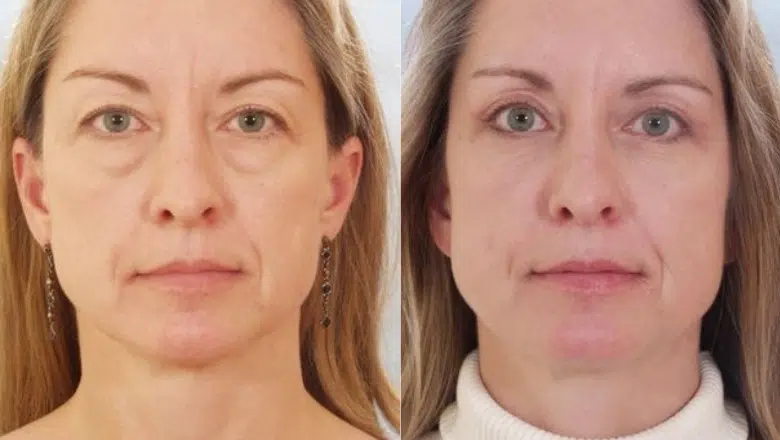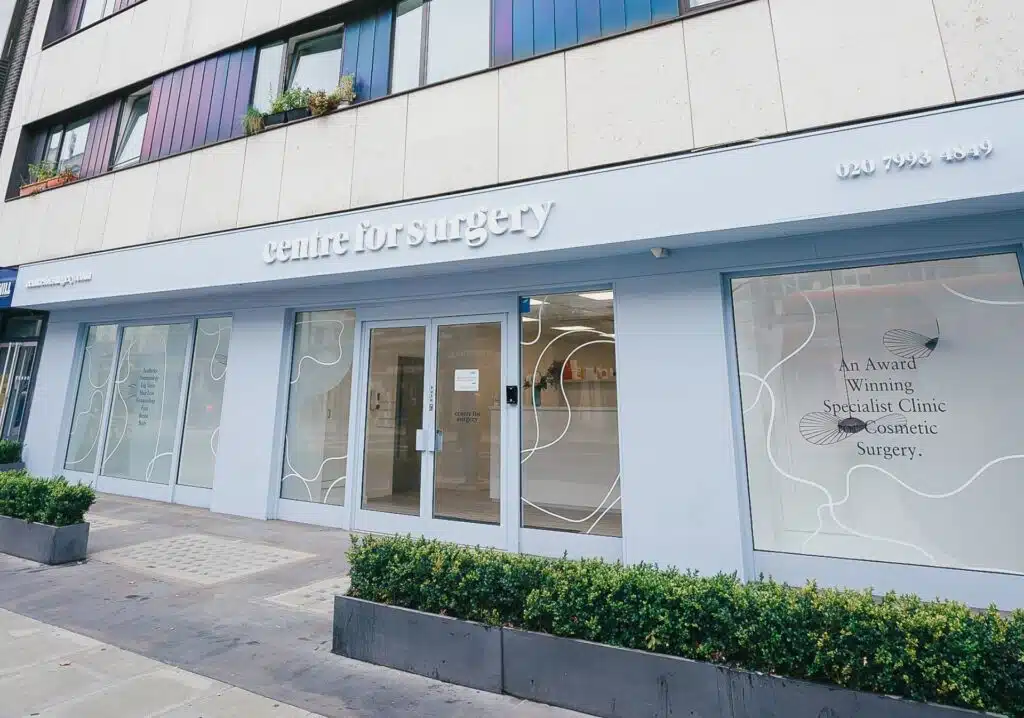Embarking on the journey towards eyelid surgery, also known as blepharoplasty, is a decision that merits careful thought and thorough research. This surgical procedure, while offering remarkable outcomes for numerous individuals, is not one to be taken lightly. A well-informed decision is paramount, necessitating a deep dive into the advantages and potential drawbacks associated with the operation.
The essence of blepharoplasty lies in its ability to rejuvenate the area around the eyes, contributing to a more youthful and refreshed appearance. However, the decision to proceed with such surgery extends beyond the anticipation of aesthetic enhancement. It requires a balanced understanding and consideration of all aspects involved.
Engaging in comprehensive research is the cornerstone of preparing for eyelid surgery. This entails not only familiarising oneself with the procedural details but also contemplating the broader implications, including recovery time, potential risks, and the realistic outcomes that can be expected. It is through this lens of awareness and knowledge that individuals can make an informed decision, aligning their expectations with what the surgery can feasibly achieve.
RELATED: Eyelid Surgery FAQs – Q&A about Blepharoplasty
Moreover, the process of deciding on blepharoplasty should be approached with patience and diligence. It involves reflecting on personal goals, discussing concerns with a qualified surgeon, and weighing the benefits against the possible complications. Such a deliberative approach ensures that the decision to undergo eyelid surgery is grounded in a clear understanding of its impact, both aesthetically and in terms of overall well-being.
(1) Types of Blepharoplasty
When considering blepharoplasty, it’s crucial to recognise that this cosmetic procedure is not a one-size-fits-all solution. In fact, eyelid surgery is highly customisable and designed to meet the specific aesthetic or functional needs of each individual. This adaptability is what makes blepharoplasty a particularly appealing option for those looking to refresh their appearance. Primarily, the procedure is categorized into two distinct types: upper and lower blepharoplasty.
Upper Blepharoplasty
This form of the procedure focuses on the upper eyelids. It’s often sought by individuals looking to remove excess skin that may be causing a hooded appearance, or to correct droopiness that can impair vision. The goal is to create a more open, alert, and youthful look around the eyes. Upper blepharoplasty can have a transformative effect, not just cosmetically but also functionally, by enhancing the field of vision for some patients.
Lower Blepharoplasty
Conversely, lower blepharoplasty targets the lower eyelids. This procedure is typically aimed at addressing issues like under-eye bags, puffiness, and wrinkles that contribute to a tired or aged appearance. Lower blepharoplasty can significantly rejuvenate a person’s facial aesthetic by removing or repositioning excess fat, tightening skin, and smoothing out the under-eye area.
The choice between upper, lower, or combined blepharoplasty procedures depends on individual concerns and desired outcomes. Some may opt for upper blepharoplasty to alleviate the visual obstruction caused by drooping eyelids, while others might prefer lower blepharoplasty to eliminate under-eye bags that make them look perpetually exhausted. Then there are those who choose to undergo both procedures simultaneously for a more comprehensive rejuvenation of their entire eye region.
(2) Identifying Your Motivations for Undergoing Eyelid Surgery: A Pre-Consultation Guide
Before stepping into a consultation room at Centre for Surgery, it’s imperative to reflect on your personal motivations for considering eyelid surgery, also known as blepharoplasty. Understanding your reasons for wanting this procedure is a crucial first step in your surgical journey. It not only prepares you for a more meaningful dialogue with your surgeon but also ensures that the advice and recommendations you receive are tailored to your specific concerns and aspirations.
Eyelid surgery offers a solution to a variety of aesthetic and functional issues related to the eye area. Individuals opt for this procedure for numerous reasons, each seeking to address different concerns that impact their appearance or daily living. Here are some of the common motivations that lead people to consider blepharoplasty:
- Excess Eyelid Skin Resting on the Upper Lashes: One of the primary reasons for undergoing upper blepharoplasty is to remove the surplus skin that droops over the upper eyelashes. This excess skin can give the eyes a tired appearance and, in some cases, contribute to a feeling of heaviness around the eyes.
- Low or Descended Brows: While not a direct target of eyelid surgery, concerns about low or descended brows often accompany the desire for upper eyelid surgery. In some instances, a brow lift may be recommended in conjunction with blepharoplasty to achieve optimal results.
- Excess Skin or Fat Tissue on the Lower Eyelids: Lower blepharoplasty is frequently sought to remove or reposition fat deposits and tighten skin in the lower eyelid area, addressing bags under the eyes and smoothing out wrinkles. This can significantly rejuvenate one’s appearance, making the individual look more rested and alert.
- Obscured Vision Due to Excess Upper Eyelid Skin: Beyond cosmetic concerns, functional blepharoplasty is performed to remove the excess upper eyelid skin that can obstruct vision. This procedure not only enhances the aesthetic appeal of the eyes but also improves the patient’s field of vision, making daily activities easier and safer.
(3) Preparing for Your Blepharoplasty Consultation: A Step-by-Step Guide to Making the Most of Your Meeting
Embarking on the path to eyelid surgery begins with a crucial step: the consultation. This meeting is more than just a formal conversation; it’s an opportunity to establish a connection with your surgeon, align your expectations, and address any concerns you may have. To ensure you’re fully prepared for this pivotal encounter at Centre for Surgery, here’s a comprehensive guide on how to approach your consultation effectively.
Reflect on Your Goals: Before your consultation, spend time contemplating what you wish to achieve with blepharoplasty. Are you looking to refresh your appearance, improve your vision, or both? Understanding your own expectations will help you articulate your desires more clearly to your surgeon.
Compile a List of Questions: To get the most out of your consultation, prepare a list of questions in advance. This should cover all aspects of the procedure, from outcomes to recovery. Questions you might consider include:
- What results can I realistically expect from the surgery?
- Am I a suitable candidate for blepharoplasty?
- What are my options for anaesthesia, and how will they affect my experience?
- Could you outline the aftercare and recovery process?
- What are the potential risks and complications associated with this surgery?
Inquire About Your Surgeon’s Expertise: Understanding your surgeon’s qualifications and experience is key to building trust and confidence in their ability to deliver the desired results. Don’t hesitate to ask about their background, including:
- Their specific training and qualifications in plastic surgery.
- The number of blepharoplasty procedures they’ve performed.
- Any before-and-after photos of previous patients they can share (while respecting patient confidentiality).
Discuss Your Medical History: Be prepared to share your medical history, including any previous surgeries, current medications, and general health issues. This information is crucial for assessing your suitability for surgery and customising the procedure to ensure the best outcomes and minimise risks.
Voice Your Concerns: If you have any fears or uncertainties about the surgery, the consultation is the perfect time to address them. A good surgeon will welcome your questions and provide clear, comprehensive answers to put your mind at ease.
Consider the Financial Aspect: Understanding the cost of surgery and the available payment or financing options is also important. Don’t shy away from discussing the financial aspect during your consultation to ensure you’re fully informed and prepared.
(4) Preparing for Eyelid Surgery: Key Steps for a Smooth Recovery
Deciding to undergo eyelid surgery requires thoughtful preparation to ensure the best possible outcomes and a smooth recovery. The preparatory phase is a collaborative effort between you and your surgeon at Centre for Surgery, tailored to enhance your body’s healing capabilities and mitigate any potential risks. Here’s a guide on how to prepare for your surgery, with general advice complemented by specific instructions from your surgeon.
Discuss Lifestyle Modifications with Your Surgeon: One of the first steps in preparing for eyelid surgery involves making certain lifestyle adjustments. For instance, if you smoke, your surgeon will advise you to quit well in advance of your surgery date. Smoking can significantly impair your body’s ability to heal, increasing the risk of complications during and after the procedure. Your surgeon will provide guidance on how long before surgery you should stop smoking and when it’s safe to resume, if applicable.
Review Your Medication: Another crucial aspect of preparation is the review of your current medications. Some medications, particularly those that thin the blood, can increase the risk of bleeding during and after surgery. These might include over-the-counter pain relievers like aspirin and ibuprofen, as well as certain supplements. Your surgeon will give you a list of medications to avoid before surgery and may consult with your general practitioner or specialist if you’re taking prescription medications that need to be managed differently in the lead-up to your procedure.
Follow Specific Pre-Operative Instructions: Your surgeon will provide you with a set of pre-operative instructions tailored to your health status and the specifics of your surgery. These instructions may cover a range of preparations, from fasting requirements to skincare routines. It’s imperative to follow these directions carefully to minimize the risk of complications and optimize your surgery outcomes.
Maintain a Healthy Lifestyle: In the weeks leading up to your surgery, focusing on maintaining a healthy lifestyle can be beneficial. A balanced diet rich in vitamins and minerals supports your body’s healing process. Additionally, regular, moderate exercise can improve circulation and overall health, provided it’s approved by your surgeon. However, you’ll need to pause certain types of physical activity, especially those that could increase the risk of injury, as your surgery date approaches.
Arrange for Assistance after surgery: Planning for your recovery period is also essential. You’ll need someone to drive you home after the surgery and stay with you for at least the first night. It’s also wise to prepare your recovery area at home with essentials like ice packs, clean towels, and your prescribed medications within easy reach.
Prepare Mentally: Lastly, preparing mentally for surgery and the recovery process is just as important as the physical preparations. Have realistic expectations and plan for rest and relaxation to aid in your recovery. Being in a positive state of mind can contribute significantly to a smoother healing process.
(5) Identifying Suitable Candidates for Eyelid Surgery: A Comprehensive Overview
Determining whether you are a suitable candidate for eyelid surgery, or blepharoplasty, is a critical step in the journey towards enhancing your facial aesthetics. At Centre for Surgery in London, our approach to patient selection is grounded in ensuring the safety, well-being, and satisfaction of each individual. Understanding the criteria for suitability can help prospective patients gauge their readiness for this transformative procedure.
Awareness of Risks and Realistic Expectations
Suitable candidates for blepharoplasty are those who are fully informed about the potential risks and complications associated with the surgery. They possess a realistic outlook on what the procedure can and cannot achieve. It’s important to understand that while eyelid surgery can significantly improve the appearance of the eyes and the overall facial aesthetic, it has its limitations and potential risks that need to be considered.
General Health Status
Good candidates are generally healthy, without significant underlying health conditions that could complicate surgery or recovery. Conditions such as uncontrolled diabetes, heart disease, or autoimmune disorders may increase the risk of complications. A thorough medical evaluation during the consultation at Centre for Surgery will help ascertain your health status and suitability for the procedure.
Moderate to Severe Eyelid Laxity
Blepharoplasty is most effective for individuals experiencing moderate to severe eyelid laxity. This includes drooping of the upper eyelids that may impair vision, significant bags under the eyes, or excess skin that contributes to a tired or aged appearance. The procedure aims to correct these issues, resulting in a more youthful and refreshed look.
RELATED: Eyelid Ptosis – How Eyelid Surgery Can Help Droopy Eyes
Consideration of Non-Surgical Options
For those with only mild skin laxity or signs of ageing, non-surgical treatments might be recommended as a first step. Non-surgical options, such as fillers or SmoothEye laser treatment, can offer temporary improvements and help delay the need for surgery. It’s beneficial to explore these alternatives during your consultation to determine the most appropriate course of action for your specific concerns.
Personal Consultation
The definitive way to determine your suitability for eyelid surgery is through a personal consultation with a qualified surgeon at Centre for Surgery. During this meeting, your surgeon will conduct a detailed assessment of your eyelids, discuss your aesthetic goals, and review your medical history. This one-on-one conversation is pivotal in making an informed decision about proceeding with blepharoplasty.
(6) Understanding the Financial Commitment: The Costs of Eyelid Surgery
When contemplating eyelid surgery, or blepharoplasty, it’s essential to consider and thoroughly understand the financial implications of the procedure. At Centre for Surgery in London, we advocate for transparent and open discussions about costs to ensure our patients are fully informed and prepared for their surgical journey. Here’s what you need to know about the financial aspect of undergoing eyelid surgery.
Variable Costs Based on Surgical Complexity
The cost of blepharoplasty can vary significantly depending on several factors, chief among them the complexity and scope of your surgery. Procedures that address both the upper and lower eyelids typically incur a higher cost than those targeting just the upper or lower eyelids due to the increased complexity and time required in surgery. Additionally, the specific techniques used and any additional procedures (such as fat repositioning or removal) will also influence the overall cost.
RELATED: How Much Does a Blepharoplasty Cost in London? – Eyelid Surgery Prices
Consultation with Your Surgeon
One of the first steps in understanding the costs involved is to have a detailed discussion with your surgeon. During your consultation at Centre for Surgery, your surgeon will evaluate your individual needs, discuss the specifics of your proposed surgery, and provide you with an accurate estimate of the costs involved. This estimate will include the surgeon’s fees, anaesthesia fees, facility fees, and any post-operative care required.
Consideration of All Related Expenses
It’s important to consider all related expenses when budgeting for your eyelid surgery. This includes pre-operative consultations, post-surgery follow-up visits, any necessary medications, and potential costs for recovery aids such as cold compresses or special ointments. Ensuring you have a comprehensive understanding of these costs upfront can help prevent any unexpected financial surprises.
Investing in Quality and Safety
While cost is an important consideration, it’s also crucial to balance financial concerns with the quality and safety of your care. Opting for a reputable and experienced surgeon, even if it might come at a higher price, is an investment in your health, safety, and the quality of your results. The expertise of your surgeon and the standard of care provided by the clinic should be paramount considerations.
Financing Options
If the cost of surgery is a concern, it may be worth exploring financing options. Centre for Surgery offer financing plans to help make the procedure more affordable by spreading the cost over time. During your consultation, ask about available financing options and whether you might be eligible.
(7) What to Expect on the Day of Your Eyelid Surgery Procedure
Understanding what happens during eyelid surgery, also known as blepharoplasty, can alleviate pre-surgery anxiety and help you feel more prepared for the procedure. At Centre for Surgery in London, our goal is to ensure that every patient feels informed and comfortable with their surgical plan. Here’s an overview of what you can expect during the surgery, including insights into anaesthesia options and the surgical process itself.
Anaesthesia Options: One of the first steps on the day of your surgery will be the administration of anaesthesia. The type of anaesthesia used will depend on the specifics of your procedure, your overall health, and your personal preference. The options generally include:
- General Anaesthesia: This is where you are put into a sleep-like state and will not be aware of the procedure taking place. General anaesthesia is often recommended for more complex surgeries or for patients who prefer to be completely unconscious during the procedure.
- Local Anaesthesia with Sedation: For less extensive surgeries or for patients who wish to avoid the effects of general anaesthesia, local anaesthesia combined with sedation might be an option. This approach numbs the eye area, so you won’t feel any pain, while the sedation keeps you relaxed and comfortable throughout the surgery.
The Surgical Process: Once the anaesthesia has taken effect, your surgeon will proceed with the blepharoplasty. The specific steps will vary depending on whether you’re having upper eyelid surgery, lower eyelid surgery, or both, but the general process involves:
- Making Precise Incisions: For upper eyelid surgery, the incision is typically made along the fold of the eyelid, allowing for the removal of excess skin, muscle, and possibly fat. For lower eyelid surgery, the incision can be made just below the lash line or inside the eyelid (transconjunctival approach), depending on the extent of correction needed.
- Removing or Repositioning Tissue: The surgeon will carefully remove or reposition excess fat, skin, and muscle to achieve a more youthful and rested appearance. The goal is to correct the issues you’ve discussed during your consultation, such as drooping eyelids or under-eye bags.
- Closing the Incisions: Once the desired adjustments have been made, the incisions will be closed with sutures. These may be dissolvable or may need to be removed during a follow-up visit. The placement of the incisions is designed to be as inconspicuous as possible, with scars typically hidden within the natural folds of the eyelid or along the lash line.
After the Surgery: Immediately following the procedure, you will be taken to a recovery area where your condition and comfort level will be closely monitored. You may experience some swelling, bruising, and discomfort, but these are normal parts of the healing process and can be managed with medication and cold compresses.
(8) Recovery Journey After Eyelid Surgery: Essential Tips for a Smooth Healing Process
The recovery period following eyelid surgery, or blepharoplasty, is a pivotal phase where the body heals and the results of your procedure begin to emerge. At Centre for Surgery in London, we emphasise the importance of a well-prepared and informed recovery to ensure the best possible outcomes. Here’s what you can expect during the recovery process, along with some essential tips to facilitate a smooth and comfortable healing journey.
Initial Days Post-Surgery: Swelling and soreness around the eyes are common in the first few days after the procedure. These symptoms are a normal part of the healing process and will gradually subside. To manage discomfort, your surgeon may prescribe pain medication, and you can use cold compresses to help reduce swelling.
Preparations Before Surgery: Proper preparation can significantly impact your recovery experience. This includes arranging for time off work to allow your body to heal without the added stress of professional obligations. You’ll also need someone to drive you home after the surgery and assist you at home, especially during the first few days when your mobility and vision may be temporarily impaired. If you have young children, arranging additional support is crucial to ensure you can rest and recover properly.
Recovery Instructions: Your surgeon will provide detailed recovery instructions, which are vital to follow for optimal healing. Key guidelines typically include:
- Sleep with Your Head Elevated: Keeping your head elevated while sleeping can help reduce swelling and promote faster healing. Use extra pillows to maintain a comfortable, elevated position.
- Avoid Rubbing Your Eyes: It’s important to avoid any pressure or rubbing on your eyes during the recovery period. This precaution helps prevent irritation and protects the incisions as they heal.
- Stay Hydrated: Adequate hydration is essential for a smooth recovery. Drinking plenty of water can help your body heal more efficiently and is beneficial for overall health.
- Take Enough Time to Rest: Allow yourself ample time to rest and recover. Avoid strenuous activities and exercise until your surgeon gives you the go-ahead, as these can increase swelling or cause bleeding.
- Protect Your Eyes from Sunlight: After eyelid surgery, your eyes may be more sensitive to sunlight. Wearing sunglasses and a hat when outside can protect your eyes from harsh rays and contribute to a more comfortable recovery.
- Report Any Concerning Symptoms: While some swelling and discomfort are expected, certain symptoms could indicate complications. Contact your surgeon immediately if you experience severe pain, vision changes, or signs of infection.
Follow-Up Appointments: Your surgeon will schedule follow-up appointments to monitor your healing progress. These visits are an opportunity to address any concerns and ensure that your recovery is on track.
(9) Setting Realistic Expectations: Understanding the Outcomes of Eyelid Surgery
Embarking on the journey of eyelid surgery, or blepharoplasty, is a decision motivated by the desire for rejuvenation and enhancement of the eye area. We are committed to ensuring our patients are well-informed about what to expect from their surgery, emphasising the importance of realistic expectations. Here’s a closer look at the anticipated outcomes of eyelid surgery and how to manage your expectations for a satisfying surgical experience.
Realistic Outcomes from a Qualified Surgeon: A key to satisfaction with eyelid surgery results lies in the skill and expertise of your surgeon. Qualified surgeons, like those at Centre for Surgery, aim to achieve outcomes that meet your aesthetic goals while prioritising your health and safety. However, it’s important to understand that while surgeons strive for perfection, no surgery can guarantee flawless results. The aim is to significantly improve the appearance of the eyelids, making them look more youthful and rested, rather than perfect.
Discussion of What’s Realistic: During your consultation, your surgeon will discuss what can realistically be achieved with blepharoplasty based on your individual anatomy, age, and the specific concerns you wish to address. This conversation is crucial for aligning your expectations with what is surgically achievable. Factors such as skin quality, facial structure, and age can influence the final results, and your surgeon will provide guidance on what outcomes you can expect.
The Healing Process: It’s essential to acknowledge that the final results of eyelid surgery won’t be immediately visible. Swelling and bruising are common in the initial weeks following the procedure, and these temporary conditions can obscure the final outcome. Patience is required during the healing process, as the appearance of your eyelids gradually improves and stabilises. It may take several months for the swelling to fully subside and for the incision lines to mature.
Long-Term Expectations: Eyelid surgery offers long-lasting results, but it’s important to remember that it does not halt the ageing process. Over time, natural ageing and lifestyle factors can influence the longevity of the results. Taking care of your skin and maintaining a healthy lifestyle can help prolong the effects of the surgery.
Before and After Comparisons: Your surgeon may provide before and after photos of previous blepharoplasty patients to help set realistic expectations. These comparisons can offer a visual reference for the types of improvements you might expect, bearing in mind that each patient’s results are unique.
(10) Addressing the Risks: Understanding the Potential Side Effects of Eyelid Surgery
While eyelid surgery, or blepharoplasty, is a widely performed and generally safe procedure, it’s crucial for patients to be aware of the potential risks and side effects associated with it. At Centre for Surgery in London, patient safety and education are paramount. By choosing a highly qualified surgeon and adhering to recommended guidelines for preparation and aftercare, you can help minimise risks. However, it’s important to acknowledge that some level of risk is inherent in any surgical procedure. Here’s an overview of potential side effects and risks associated with eyelid surgery:
Infection: As with any surgery, there is a risk of infection. Sterile techniques and post-operative care instructions are designed to minimize this risk, but it’s crucial to follow your surgeon’s advice on wound care and to report any signs of infection immediately.
Anaesthesia Complications: Reactions to anaesthesia, though rare, can occur. Discussing your medical history and any previous reactions to anaesthesia with your surgeon and anaesthesiologist can help mitigate this risk.
Unwanted Outcomes: Some patients may have expectations that are not fully met, leading to dissatisfaction with the results. Unwanted outcomes can include asymmetry, insufficient correction, or overcorrection of the eyelid position. Open communication with your surgeon before surgery about realistic expectations can help reduce the risk of dissatisfaction.
Poor Scarring: While the incisions for eyelid surgery are typically made in inconspicuous locations, such as the natural crease of the upper eyelid or just below the lashes on the lower lid, individual healing and genetic factors can affect scarring. Following your surgeon’s advice on scar care can help minimize scarring.
Bleeding: Some bleeding is normal during and after surgery, but excessive bleeding can lead to complications. Adhering to pre-surgery instructions, such as avoiding blood-thinning medications and supplements, is crucial.
Dry Eyes: Patients may experience dry eyes or irritation following eyelid surgery. These symptoms are usually temporary and can be managed with eye drops or other treatments recommended by your surgeon.
Vision Changes: Temporary changes in vision, such as blurriness, are possible but typically resolve on their own. It’s important to report any persistent changes in vision to your surgeon.
Difficulty Closing Eyes: In rare cases, removal of too much skin can lead to difficulties fully closing the eyes. This is why choosing an experienced surgeon who can accurately assess the amount of skin to remove is essential.
RELATED: Botched Eyelid Surgery – How To Avoid Blepharoplasty Complications
Mitigating Risks of Eyelid Surgery
The key to mitigating these risks lies in selecting a reputable and experienced surgeon, like those at Centre for Surgery, who are skilled in performing blepharoplasty and can guide you through the process with care and expertise. Additionally, following all pre- and post-operative instructions and attending follow-up appointments are critical steps in ensuring a safe and successful recovery.
RELATED: Risks of Blepharoplasty Surgery – Eyelid Surgery Risks
Why Choose Centre for Surgery for Your Blepharoplasty Procedure in London
When considering eyelid surgery, the choice of clinic and surgeon is paramount to ensuring the best outcomes, safety, and care throughout your surgical journey. Centre for Surgery in London stands out as a premier destination for individuals seeking blepharoplasty for several compelling reasons:
Highly Qualified Plastic Surgeons
At Centre for Surgery, our team comprises fully trained and certified plastic surgeons specialising in blepharoplasty. Their extensive training, coupled with a deep understanding of facial anatomy and aesthetics, ensures that you are in the hands of professionals who are equipped to deliver the results you desire.
Track Record of Success
Our surgeons have a proven track record of successful surgeries, evidenced by our extensive portfolio of satisfied patients. We pride ourselves on delivering results that not only meet but exceed our patients’ expectations, contributing to our reputation as a leading plastic surgery clinic in London.
Personalised Consultations
We believe that a successful surgical outcome starts with a thorough and personalized consultation. Our surgeons take the time to listen to your concerns, understand your goals, and discuss your options in detail. This approach ensures that your surgical plan is tailored specifically to you, aligning with your aesthetic goals and ensuring your health and safety.
Commitment to Patient Safety
Patient safety is our utmost priority. We adhere to the highest standards of surgical practice and patient care, from the initial consultation through to post-operative follow-up. Our state-of-the-art facility is equipped with the latest technology and adheres to strict safety protocols to ensure the best possible outcomes.
Comprehensive Aftercare
Understanding that recovery is a crucial part of the surgical process, we provide comprehensive aftercare support to all our patients. Our dedicated team is available to guide you through your recovery, offering advice and assistance to ensure a smooth and comfortable healing process.
Education and Transparency
We believe in the power of education and transparency. Our surgeons and staff are committed to providing you with all the information you need to make an informed decision about your surgery. From discussing potential risks and side effects to outlining the expected recovery process, we ensure you have a clear understanding of every aspect of your procedure.















